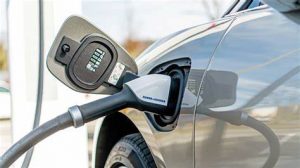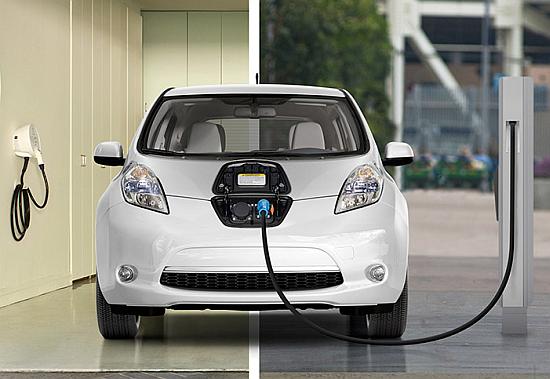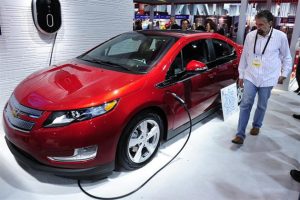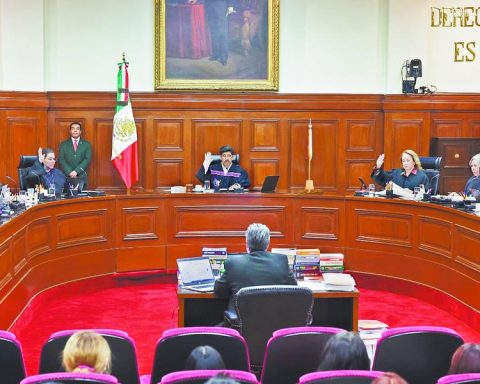In Ecuador there are 34 electric stations, but other countries in the region, with even smaller populations, reach more than three times that capacity.
Out of every hundred vehicles that are sold per month in Ecuador, 4 are electrical or hybrids. Although there has been a rebound in 2021, the figures for sustainable mobility in the country are still minimal.
According to the latest report from the Association of Automotive Companies of Ecuador (Aeade), the best sales were achieved in June and September 2019. However, even in those good months, the number of hybrid cars it reached a peak of 504 out of a total of more than 12,000 traded. In the case of the completely electrical, the maximum was 80 units.
The price and the little supply of electrolineras or charging points They are among the main constraints for clean mobility options to gain more ground in the country.
Thus, for example, eleven models of electric cars, corresponding to seven brands (Nissan, Kia, MG, Zhidou, BYD, Dayang and Kaiyun).
However, the cheapest options cost no less than $ 25,000, with a maximum range of 400 kilometers before needing to recharge.
For a taxi driver, or a person who makes extensive use of his vehicle, a traditional alternative (gasoline or diesel) can be found at $ 14,000.
Lack of infrastructure
María Paulina Romo, representative of Grupo Delivergas, stated that Ecuador is far from having the minimum levels of charging points to go towards a massification of the sustainable mobility.
“There may be a commitment from suppliers to expand the offer of electric vehicles, but not necessarily the cities are ready, “he said.
Throughout the country, the number of electrolineras installed and operational reaches 34. More than 95% are concentrated in Quito and Guayaquil.
Countries with less population such as Uruguay and Costa Rica have between 85 and 243 electric stations, respectively.
“It is essential to find out how we can make public-private efforts to establish more charging points and benefit not only businesses, but also citizens,” said Romo.
Andrea Llerena, expert in sustainable mobilityHe commented that the debate has been trapped in which should come first: the infrastructure or a greater supply of electric vehicles.
“The two things must go hand in hand. If more is invested in facilities (charging points), and awareness is raised about the long-term benefits, less polluting vehicles will gain market, “he said.
Despite this, Llerena confirmed that It should be taken into account that the investment necessary to carry out the complete process of energy transition and the reduction of CO2 emissions.
Menos del 10% de las empresas en el país están invirtiendo en energías limpias y movilidad eléctrica.
Commitment to sustainable mobility, despite costs and legal gapss
Romo stressed that the group he represents opted for a change in the business model. Specifically, they teamed up with the national entrepreneur Carlos Tacuri in order to design electric bikes for the delivery of 70% of light parcels (envelopes, letters, documents) in the financial areas of Quito, Guayaquil and Cuenca.
Before getting to this draft, an attempt was made to change conventional trucks for electric motorcycles. However, the use of these motorcycles has gaps in the regulations of each city.
“Unfortunately, the delivery men had to deal with three police stops on each trip because electric motorcycles do not have the traditional plate of a conventional vehicle,” said Romo.
For this reason, Llerena pointed out that it should work together with municipalities, the ministry of the environment, National transit agency (ANT), and private company, to create an expeditious, easy and efficient legislation for the electric mode.
Romo acknowledged that clean energies and the electric mobility they are long-term bets and definitely represent significant investments. “Green credit options for sustainable projects should be expanded,” he added. (JS)
Relative. –
More expensive at startup, but cheaper in the long run
According to estimates from the Ecuadorian Electric Mobility Association and Sustainable, although electric cars require a higher initial investment, the cost of use is much lower in the long term.
Thus, during the entire useful life of these cars (10 to 15 years), the kilometer traveled generates 90% less expense compared to an option with fuel. That calculation was made with the price of gasoline as of May 2021.
The Association, however, recognizes that electrical technology still needs to be further developed to make the sale price more affordable.
In Ecuador, that asking price is too expensive for most, even though cars, and even chargers, have 0% duty
In addition, a 0% VAT rate is paid and they are exempt from the Special Consumption Tax (ICE).



















